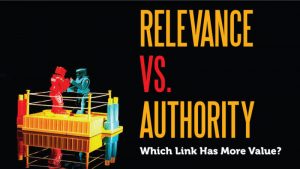
This may sound like an easy question, but what is Agile Leadership?
I’ve written all about Agile Leaders for example in The Agile Leaders Role in Transformation and How Leaders Create Agility – 3 Key Steps. In fact, in 2020, this blog was named to the Hubspot top 20 Agile Leadership blogs. And I have led and participated in multiple training courses for agile leaders. In fact, I think I have the record for taking the Certified Agile Leadership (CAL) course from Scrum Alliance three times and the Professional Agile Leadership (PAL) Course from Scrum.org once. You’d think that I would have a really good handle on what agile leadership is.
Here is the thing – the more I learn about it the more I recognize that I don’t really understand Agile Leadership. Perhaps it would be more accurate to say I have not yet wrapped my head around what it means. Does anyone really know what is meant by this term? What is in and out of the scope of that term? Let’s explore together.
In this series of posts, I want to dive into the different aspects of agile leadership. Let’s thoroughly plumb the depths of this topic. In this first part, I’d like to explore the boundaries a little. What exactly is the scope of agile leadership? Where does it begin and end?
What is the scope of Agile Leadership?
One thought that I had was perhaps it just means “Leadership”. We could have called it Modern Leadership, Leadership 2021, or something like that. But if you say “Modern”, what is modern compared to? When is modern?
Or perhaps saying agile leadership is a way of distinguishing this new leadership from Waterfall or Traditional Leadership. But there really isn’t any such thing as waterfall or traditional leadership. Sorry PMI, I know you would like to think you have a lock on waterfall, sequential-based thinking but I don’t think there is anything called waterfall leadership.
And while we are at it, are we talking about leadership or management? I know they are different concepts but modern management might be easier to define. Like looking for your car keys under a street light – the light is better.
In fact, Jurgen Appelo preferred to use the term management in his great book, Management 3.0; Leading Agile Developers, Developing Agile Leaders. (BTW, was there a Management 1.0 or 2.0?) But his choice of words doesn’t make sense either. Why did Appelo call his book Management 3.0 then go on to subtitle it “Leading Agile Developers, Developing Agile Leaders”. Isn’t that a pretty good description for Agile Leadership? Why didn’t he call his book, Agile Leadership; Leading Agile Developers, Developing Agile Leaders?
Is Agile Leadership the Same as Modern Management?
If we talk about “Modern Management”, we can contrast it with the ideas from the early 20th century that are no longer modern. That includes the principles of Scientific Management that were introduced by Frederick Taylor. His efforts to boost productivity by optimizing and simplifying jobs, combined with the mass production techniques introduced by Henry Ford had a significant influence on managers and leaders up through the current day. Some of the key concepts include:
- Mass production
- Hierarchical Organizations
- Bureaucracy, silos, politics, and turf wars
- Power distance between workers and management
- Mindless and monotonous work
- Centralized planning and control
Ford is credited with raising wages for his workers and making boatloads of automobiles. Mass production worked great if you just needed robotic workers who didn’t have to do much thinking. Henry Ford was famously quoted as saying, “Why is it that every time I ask for a pair of hands, they come with a brain attached?”
Yes, ouch.
Unfortunately, those 20th-century approaches to managing people tend to backfire spectacularly today when you have the following conditions:
- Work that is predominantly knowledge work
- A business environment characterized by VUCA – Volatility, Uncertainty, Complexity, and Ambiguity
- A workforce that is more educated, less loyal, and less driven by extrinsic rewards
What tends to work better today is organizations that encourage:
- Rapid experimentation
- Short feedback loops
- Decentralized decision-making
- Safety for failure
- Continuous Learning
- Cross-Functional Teams that are the basic building block for getting work done
How Important is the “Agile” in Agile Leadership?
Finally, there is the inclusion of agile in agile leadership. That term Agile was first applied to teams and software development back in 2001. The word has been misused quite a bit over the years and today it tends to mean a lot of different things to different people. If we take agile to literally refer to the old-timey Manifesto for Agile Software Development, then we need to consider some of the following:
- Satisfying the customer is the top priority
- Prioritizing people over process and tools
- Self-organizing teams
- Enabling change
- Empowering and trust people
I tend to think that the Agile in agile leadership likely means that the organization is trying to adopt some agile ways of working or agile teams. In many organization, agile thinking and teamwork doesn’t get much beyond the team level. Managers and leaders like agile and Scrum and the transparency it brings. Transparency to the teams that is.
In fact, I heard from a coach at one of my former clients that “went agile” a few years ago that they have removed a lot of the agile language. Managers and leaders are still using Scrum and they like that it is predictable and transparent. But they don’t empower people or allow for self-organization. It is not quite weaponized agile or dark Scrum, but it is a selective application of Agile Principles that conveniently leaves an imbalance of sharing of responsibility, transparency, and accountability between team members and leaders. It’s a lot more like command and control than it is like empowered teams.
The Agile Manifesto values and principles are part of the focus of agile leadership training today both in the CAL and the PAL. Both courses focus on helping leaders in organizations understand how to deal with those pesky, self-organizing agile teams. And the guide managers and leaders on steps they can take to transform themselves if they want to be a leader of a transformation in an organization.
Agile Leadership draws on a number of modern approaches to managing and leading people. There are related concepts like Psychological Safety and the Growth Mindset but I don’t see many formal leadership models. Rather, the courses I have attended tend to focus on anecdotes or stories of agile leadership at work. Here is a sampling:
- Spotify – How a startup used Agile to innovate, experiment, and grow.
- David Marquet – Leading in the US Navy by pushing decision making out to the knowledgeable workers close to the work.
- Richard Semler at Semco – Democratizing leadership in a corporation.
- Buurtzorg Nursing – A case study in self-organizing teams and extremely flat organizations.
- Richard Sheridan at Menlo Innovations – An organization that has pushed the idea of agile teams and team chemistry, empowering teams, innovative onboarding approaches, and more.
How or when will these novel ideas and practices become mainstream? We will look at that question and others in future posts in this series. In the meantime, I welcome your comments.
This article originally appeared here and has been republished with permission
Business & Finance Articles on Business 2 Community
(44)
Report Post







